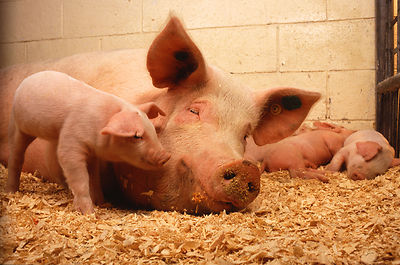Wednesday, January 27, 2016 - A California judge recently dismissed two lawsuits that claimed the FDA illegally approved a harmful drug additive, ractopamine hydrochloride, used in animal feed. Ractopamine is fe d to an estimated 60 to 80 percent of pigs in the United States to make them gain weight without having to consume a great deal of feed. It is also fed to turkeys and beef cattle.
d to an estimated 60 to 80 percent of pigs in the United States to make them gain weight without having to consume a great deal of feed. It is also fed to turkeys and beef cattle.
While cost effective for the farming industry, its use has resulted in more reports of sickened or dead pigs than any other livestock drug on the market. It has caused thousands of pigs to be unable to walk, to experience hyperactivity and broken limbs, and even to die. Many consider it to be the most dangerous livestock drug on market today.
Despite having information about the drug’s detrimental effects on animals, and that it is banned in 150 countries, U.S. District Judge Yvonne Gonzalez Rogers sided with the drug’s manufacturer Elanco, a division of Eli Lilly.
A portion of the judge’s explanation for the motion to dismiss reads as follows: “Due to statutory and regulatory requirements that applications to FDA for new drugs remain confidential… plaintiffs only became aware of the approvals, and FDA’s associated decision-making, when they were final and published in the Federal Register… Thus, plaintiffs were not able to participate in the administrative process prior to the FDA approvals at issue… Central to defendant-intervenor’s motion to dismiss, plaintiffs do not allege that they pursued any administrative remedies with the FDA relating to their NEPA grievances following the FDA approvals.”
So there you have it. The FDA is protected by secrecy, able to approve harmful drugs under a cloak of application confidentiality, knowing full well that participation in approval processes is limited.
It also means that the food you eat may contain residues of ractopamine hydrochloride – which although deemed “not for human use,” has turned up in tested meat samples.
Learn more at this link